JOURNEY INTO AFRICA - PRESENTATION
HERE WITH PRESENTATION MATERIAL ON ETHIOPIA AND AFRICA !
Land of Contrasts
Beauty and Resources
With Poverty and Suffering
Why?
There are different parts of Ethiopia. The central highland area can receive
significant rainfall, called the “Krempt”, for 3 to 4 months from June to
September/October. From 2003 through
2007 Ethiopia received 5 consecutive years of significant rainfall. A bumper
crop was reported in 2007. Land is
owned by the government and leased to the farmers, thereby removing land
capital from the masses as well as discouraging future land investments.
Ethiopia’s Resources
Favorable History – Only occupied for 5 years, but really never colonized. One of the oldest countries in the world
– Genesis 2:13
Has “Mercato”
reputedly the largest open air market in Africa.
Has very large
cement factory (Mugher) – employs about 5,000
Home of the Blue Nile
Reputed home
of Coffee
Hot Springs,
mineral water, beautiful building stone
In the year 2000, ranked 168th
out of the 173 countries on the Human Development Index (UNDP _ United Nations Development Program), 2002
BBC radio
reported on August 7, 2003 that – more than ½ of Ethiopian’s then 68 million
people live on less than $1/day.
In 2000/2001 –
Ethiopia has 2nd lowest per
capita income (IMP 2001) - $US 100.=
In a land of
no Unemployment Compensation, Welfare, or Social Security.
Many of the homes are made out of mud and bamboo, with
no running water, nor electricity.
There
were 5 consecutive significant long rainy seasons in Ethiopia from 2003 through
2007, and a bumper crop in 2007. One
must ask therefore why are the people hungry, since there is rain and food?
In Ethiopia fields tilled
by ox-drawn wooden plows, done by children. And if even with these plows, there
are efficiency issues:
a. Land owned
by government – discourages long term investment
b. Feudal
mentality and low work ethics – China – 7% of world’s farming land feeds 22% of
world’s population. Farmer there works, studies, and works with experts.
c. Ethiopia –
bumper crop – yet people still hungry. At the time we were there 2003 – 2007:
five years of significant rainfall.
Gender
specialist from Uganda, Thelma Auuorri or something, noted that Ethiopia treats its women as
donkeys. In general, the women of
Ethiopia work very hard, are paid low wages (e.g., $0.93/day for construction
work), do not receive decent education and work opportunities, are beaten,
raped, and subjected to such harmful traditional practices such as “marriage by
abduction” and FGM (female genital mutilation).
It
is very common to see girls to elderly women walk barefoot carrying heavy loads
on their back from jars of water to wood to straw.
Generally,
the cost of ONE BAG OF CEMENT would be greater than the wages a woman would
earn for one week (6 days) of construction work. It is simple. Hard work and low pay. It is exploitation.
Some
beg out of a “culture of begging”, and others out of necessity.
An
estimated 150,000 to 600,000 street children in Ethiopia. Not all are orphans.
When
we arrived in 2003 there were hardly any street signs in the capital of
Ethiopia – the seat of the African Union.
Later they added more, diplomatically naming some after the names of
African countries. It didn’t seem to
matter to most people. Most taxis
(mini-buses) travelled along specified routes, calling out stops according to
destinations and landmarks.
Ethiopia
is endowed with exquisite natural beauty.
Compare this with the pictures that UN agencies show. The real story is how could devastating
poverty and suffering be sandwiched in between natural resources and beauty??!!
Ethiopia
is the reputed home of coffee. It can
reportedly grow wild in Ethiopia’s “Kefa” (kaf-fa) region. Coffee has been a mainstay of Ethiopia’s
exports, along with oilseeds, and leather. Recently, Ethiopia has seen the dramatic rise of the export of cut
flowers. Ethiopia has a beautiful
climate for the cultivation of flowers.
Many African names have significant meanings attached to them.
Addis Ababa means “New Flower”!
Guenet with her step -
mother and “sister”, but it is her cousin, and her children Bamlach, Yeabsira, and Onesimus (with Evelyn). She
decorates mud house with evergreen branches and balloons. She covers walls with newspaper. One of a country’s resources is their people. But in many parts of Africa there are not
even sufficient parks for the children to play in. There appears to be little investment into
the future of Africa. In Ethiopia many
dads either do not know the birth dates of their children or do not even
celebrate them. Boys will typically kick
around a deflated ball.
Right now we have two mother with
children that needs our help. Not going
to Africa to watch people suffer, lacking church support, we left Ethiopia in
Sept. 2007 for America to gather aid for Africa and to visit mom living alone.
Sitting
middle: Guenet Liben has three children, she had
to put her two sons in orphanage because she doesn’t have the funds for food
and medicine. During our stay, one of the sons was always sick. Guenet is aware that the children need to wash their hands before
they eat. But children sometimes like to
eat dirt, & play with dirt. Children
just plain get dirty.
Standing on
the 3rd from your right: Meheret W has a son
and unemployed.



























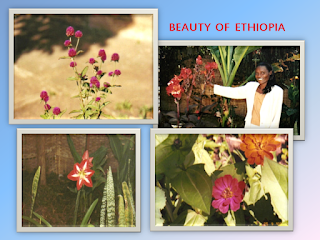




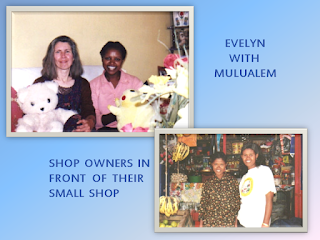
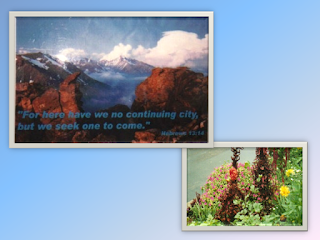

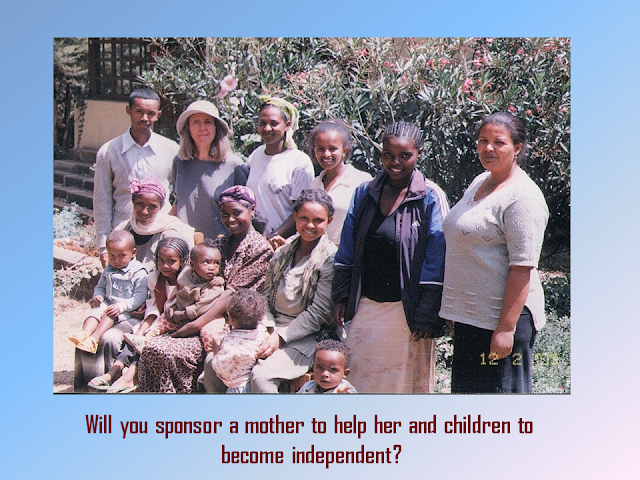





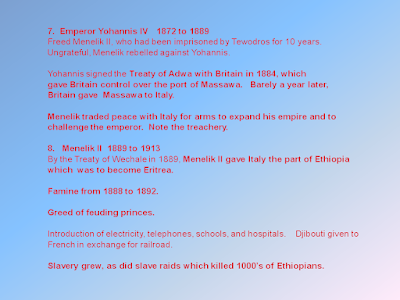



No comments:
Post a Comment